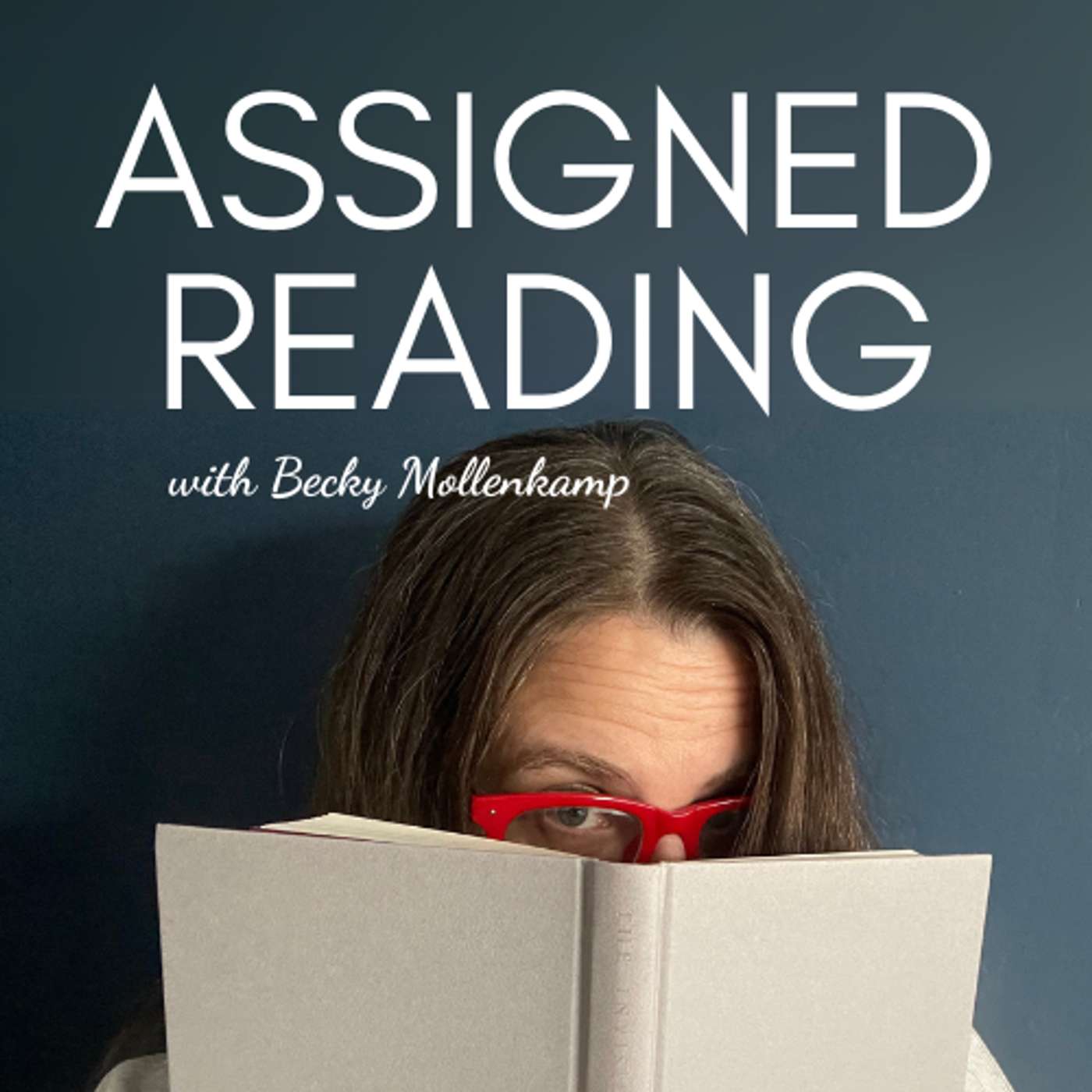
Mindset Unlimited: Tips, Tools, and Inspiration for Women in a Time of Change
Your Mindset Unlimited is a podcast for women navigating professional and life transitions who are seeking to release learned limitations and build a more holistic, liberatory version of success.
Your Host, Valerie Friedlander, is an ICF certified coach, sociologist, intersectional feminist, artist, business owner, and mom. Based in Chicago and supporting clients world-wide, she helps high-achieving women transition into their next chapter of life with clarity, confidence, and self-compassion. lead with intention, and create their definition of success that honors all aspects of their life.
In this podcast you'll find tips, tools, and inspiration to help you release the internalized limitations cultivated by our social system imbalances and lead your life with more ease and joy.
Some of the topics you'll find here are: finding fulfillment, habit shifting, motivation, time management, money mindset, stress management, impostor syndrome, productivity, work/life balance, communication, boundaries, leadership, social activism, burnout, building a business, motherhood, and more.
You can find out about Valerie and her work at www.valeriefriedlander.com
Follow her on most social media @unlimitedcoachval
Sign up for her email list at www.valeriefriedlander.com/signup
Books referenced on the podcast can be found on Bookshop.org
https://bookshop.org/lists/unlimited-podcast-book-recommendations
Mindset Unlimited: Tips, Tools, and Inspiration for Women in a Time of Change
Collaborative Leadership from Boardroom to Patient-Centered Caregiving with Heather Maurer
Collaborative Leadership from Boardroom to Patient-Centered Caregiving is essential for fostering effective relationships between CEOs and board members, as well as between healthcare professionals and patients. This approach not only enhances organizational dynamics but also improves patient outcomes by prioritizing communication, trust, and shared goals. By empowering all stakeholders and embracing transparency, collaborative leadership creates an environment where diverse perspectives are valued, and innovative solutions can emerge to address complex challenges in healthcare and beyond.
In this episode of Unlimited, I invited Heather Maurer (she/her) CEO of the National Association of Nurse Practitioners in Women’s Health to join me in a conversation around advancing collaborative leadership from boardroom to patient-centered caregiving.
Some of what we talk about in this episode includes:
- Listening to yourself, saying no, and respecting your own expertise and role
- Empowerment vs control and collaborative decision-making
- Building trust through transparency, time, and accountability
- Separating systems and humans as we advocate
- Ways to support asking for what you need
LINKS FROM THIS EPISODE:
Cultivating Collaboration Over Competition
Navigating Our Relationship with Death
CONNECT WITH HEATHER:
Website
LinkedIn
Her Health Matters Podcast
CONNECT WITH VALERIE:
Website
Instagram
Facebook
Get email updates
Hello, my friends and welcome to another episode of unlimited today we are talking about collaborative leadership, from boardroom to patient centered caregiving, collaborative leadership is essential for fostering effective relationships where people are working toward a shared goal, whether we're talking about CEOs and board members or between healthcare professionals and patients or even parents, not that we're talking about that right now, but I do want to recognize that this idea of collaboration and leadership are key in All of our human to human interactions and relationships. Leadership holds responsibility, responsibility over how they show up, and also the power that they hold within a relationship. And so when we're functioning within systems, it is also being able to acknowledge and honor that dynamic that's present, given the power and privilege that someone holds within that dynamic. So being able to build trust requires transparency and accountability coming in with mutual respect means showing that there's respect and creating a space where collaboration can occur to engage this conversation and explore what this looks like within These different spaces. I've invited Heather Maurer. Heather is the CEO of the National Association of nurse practitioners in women's health. She's also a leadership coach and a healthcare advocate. She is deeply committed to addressing the barriers that hinder access to evidence based healthcare. She passionately advocates for health care policies that tackle health disparities and promote equitable access to quality care. At the core of Heather's work lies a steadfast focus on the patient, driving her unwavering dedication to improving health care outcomes for all some of the things that we explore in this episode, are listening to yourself and respecting your own expertise and role, saying no empowerment versus control and collaborative decision making, building trust through transparency, time and accountability, separating systems and humans as we advocate and ways to support asking for what you need within the healthcare system and for your health and well being. Heather shares lots of valuable insights about leadership, about the healthcare system and about navigating it, herself and her own lived experiences, even with the amount of privilege that she comes in with, I know you're going to love this conversation. So now, without further ado, let's get started. Hey there. I'm Valerie Friedlander, Certified Life business alignment coach, and this is unlimited. This podcast bridges the individual and the societal, scientific and spiritual, positive and negative, nerdy and no, there's just a lot of nerdy. Come on board, and let's unlock a light that's as badass as you are. Welcome, Heather. I'm so excited to have you on unlimited.
Heather Maurer:Thank you so much for inviting me.
Valerie Friedlander:So I like to start off with this question, which is, what is a limit that you took for granted, that you have since unlearned?
Heather Maurer:The ability to say no, and that saying no was okay,
Valerie Friedlander:Yeah,
Heather Maurer:And I'm in a good place where I'm now able to say no. However, I'm still working through being truly comfortable with it. I look at prior to saying no, what are the repercussions if I say no, and what are the repercussions if I say yes? And weigh those, and also look at, where am I utilizing this power to say, No, you know, is it an emotional reaction, or is it truly a mechanism to protect myself and my well being and my mental and physical and spiritual health?
Valerie Friedlander:Yeah, oh, those are really important questions, and it's such a common one for high achieving women, because we get so conditioned around people pleasing as self protection.
Heather Maurer:Yes, absolutely, absolutely. And I was raised in a great family, but a very strict family. I was. Also raised Catholic. Went to Catholic High School, lots and lots of rules. Pleasing was what got you the extra piece of candy, or the teacher liked you more, and you were chosen for X, Y or Z. So it was almost a way of manipulating, I think, too, sometimes just not conscious. Certainly the people pleasing, it's actually gets complex. People pleasing isn't just about pleasing.
Valerie Friedlander:Yeah, oh yeah. Well, I mean, it's, it's the fawn response, basically that most women get conditioned around. That's how we survive, is if we please you, then we'll get what we need and to at a certain point that really doesn't work well, you know? And it's interesting. It makes me think, when you talk about control, that difference between empowerment and control, like control is that I'm trying to hold on to things and manage things that are external to me, to, you know, other people, places and things, versus that empowerment of What are my choices, and being able to own my choices
Heather Maurer:Exactly.
Valerie Friedlander:And that's huge.
Heather Maurer:Huge. And very, very, very different. One is coming from within, like you said. The other one is external. One makes you feel good. The other one, there's not too much uptick, and then there's authority that sometimes can be kind of melded into control. And that's also different too.
Valerie Friedlander:Yeah, it's interesting, because I think that that moves us really well into what we're talking about, because you work with in the healthcare field, and this is one of those places where control works, the more power you have, but it doesn't really serve. And you know, one of the things you talk a lot about is that collaborative relationship, and we're looking at like as a leader in a nonprofit space as well as in healthcare and the patients healthcare provider relationship, when we think about empowerment versus control, feel like that that is a very particular energy. And a lot of times I feel like we feel a lot more control, especially with recent policies and and dynamics that are happening around women's health in our in the US, and that idea of control versus empowerment is stark. I wonder if we were to look at like first, starting with your role as a CEO on a board, when you think of that difference of creating an empowered leadership versus a controlling leadership, how do you see that difference play out in your work?
Heather Maurer:Yeah, it's a great question. I think that first of all, I recognize and know that we are better when we are all in it together, and the ability to work collaboratively, to create a space and process, to hear all viewpoints and to want to really talk it out, you know, and I think that we are living in a very fast paced world that takes time cultivating relationships. What, you know, we always say, walk in those shoes. I don't think we can really walk in someone's shoes, but we can definitely follow beside them, and we can see what they're living and, you know, we've seen this all the time in mean quotes about, you know, someone else that is fighting a battle that you know nothing about, be kind. And it's really true. I had something today that happened, and I recognized, you know, what, the person that is writing this is under a lot of stress. I'm going to give them a lot of grace. I'm going to give myself a lot of grace, and we'll figure this out. And then just recognizing that, that I truly believe, and I think this is also at the premise of who I am as a leader, is that I assume that people come to the table wanting to do great work to really support the organization, to support the mission and vision, our IDE commitment, which is our inclusivity, diversity and equity commitment, and be the best association that we can be for the women's health nurse practitioner and other advanced practice nurses who provide women's and gender related healthcare. So I think coming from that premise really sets the foundation. I also believe that, sure, there are people that have taken advantage of that, and the great thing is, I have really strong intuition, and when my gut says something's wrong, I'm going to figure out what that is. Yeah, and I usually call it as well, saying I'm feeling something's up. What? What's going on here? Why am I feeling this? And again, sometimes it just needs to be clarification, but sometimes there are things at the root of that.
Valerie Friedlander:It's such a powerful thing to engage curiosity. That's one of the things that I suggest. When people the pause, slow it down, take a pause to really think about it, and then, you know, engage curiosity. And so I love that you kind of outlined that in practice of that's what it looks like, and I would imagine that certain spaces are a little bit more conducive to assume good intent, you know, like when you're dealing with in an organization that is really clearly aligned, holding true to that mission, to that vision. If everyone is together under that then you can build and you mentioned some things in a previous conversation around building trust and having transparency in so many spaces. I think the idea of leadership when it's around control, you take away the transparency, because the more you can hold close to the chest, the more other people don't know that you know, the more power you have, the more control you can wield over other people and over the decisions, versus being able to build trust and transparency and true collaboration. What are some strategies that you've implemented within your leadership to maintain that transparency and build trust within the organization?
Heather Maurer:Sure, so I started three weeks after the pandemic was declared, and actually started a week early. So I literally went from a Friday, from one job to a Monday with a new job, this one with no mental break in between and a declared pandemic. And I did that for the main reason was, is that the PPP loans were available for 501, c3, organizations, and the paperwork to pull that together was going to take some time, and I didn't want to miss the deadline, knowing that our organization would need that money. So I didn't even have time to focus on building trust. I needed to hit the ground working and at the same time, build trust. So I think one of the big things I want to just share with the listeners is it takes time to build trust. Sure you can both come in with very similar premises, but it still takes time. And in this case, there were a lot of challenges. There wasn't the opportunity to meet in person, which I think meeting in person. There's a different energy exchange. And when I say energy exchange, it's true. We can feel and read things. We know that communication is, you know, what is it? 80% body language and the way our eyes twitch and hands move, and those things not the words coming out of our mouth, the tone of our voice, sure. So there was a lot of challenge in building that trusting relationship with the board, with the staff, with the members, because I didn't get to see them. You know, it's this two dimensional zoom world for almost two years. So I initially, I gave myself grace. I said, this is going to be much harder. This is not your typical start to a new job as a CEO. And these are uncharted territory for everybody. So I think as a collective, created that grace internally, certainly among the staff and the board. And I also believe at the time, the board felt that they were left out of things and that they I think they kind of felt like they didn't have control, and that they were told what to do, versus it being a collaborative and so I initially may have over shared sometimes, you know, there's there's sharing and then there's sharing, but I wanted full transparency, so that they could understand everything, and that any question that they had could be asked, and that during that also what their role and responsibilities were as board members, and some of that was just basic fundamentals. And I think that's another thing that comes into working with boards, is everyone comes in with different levels of understanding board governance and best practices and roles and responsibilities. So in the middle of trying to do my job in this pandemic, making sure that our doors stayed open and we were supporting our members, I was also working on sharing fundamentals, getting resources for them to read about roles and responsibilities for those that were new to being a board member, developing new processes so that there was a collaborative process for, let's say, budget, and if they had questions, those questions were answered with the greatest of transparency, and not only from me, but from our accountants, from our auditors, so that there was. Even greater authority, so that it supported what I was saying. And I think that's another thing is, is that you don't have to be an expert at everything, but bring your experts to the table, so that it illustrates that you are comfortable with having someone from the outside speak on it, and especially with CPAs and auditors, they have rules that they have to follow. They're not going to lie for a CEO. And I think that's also important, is really bring those experts to the table to support the work that you're doing.
Valerie Friedlander:Yeah, what I'm connecting as you talk is that shared trust, like you're coming in. You want to build trust with them, so that they trust you, but also it's incumbent upon you to trust them that they're also coming to the table with the same goals. So while they may be coming at it from a different direction, as you mentioned, with like, we don't know someone's lived experience, but we can listen to it. We can hear what they have to bring to the table, that you can trust that they're with you, even if they're approaching it in a different way, and that trust makes a huge difference in terms of your openness and ability to share. So it's kind of a mutual interaction, as well as the transparency to then be able to have accountability, because without transparency, there's no accountability
Heather Maurer:That's right and accountability for their roles as board members. You know, they have fiduciary responsibilities to the organization. They have other obligations that are legal. So there was that, as well as my responsibilities and role as CEO to support the organization and support the operations. And I think that's also really key for any of the board members out there. They're responsible for setting the strategic priorities and strategic direction of the organization in a c3 and your CEO and staff is there to operationalize it and communicate along the way those outcomes the process is really left to the internal team and staff members. And sometimes board members get too in the weeds, and sometimes they're too hands off. So there is a happy balance, and I would say that that is something that is a constant of ebb and flow and recognizing where, oh, it looks like, you know, this is getting too operational. That's, that's my neck of the woods, you know, but that strategic priority, or what those priorities are going to be for next year, that's, that's your area. So we have a great chart. Well, I have a great chart. My husband actually gave it to me. He's also in the c3 world. And it really delineates like, this is a board responsibility, this is a CEO staff or outside vendor responsibility that comes down to an audit or something like that. And it's really helpful to have those, because it's then a neutral and again, it comes to that table with we're all working to achieve the same goals, and sometimes we just need those general reminders, like, Oops, I'm in that zone. Let me jump back over in my spot. So I think it can be done with gentleness. And again, it takes time to learn these things.
Valerie Friedlander:Yeah, yeah. Well, to have that shared responsibility and be like, Oh, I'm not on my side, and I need to move back over and trust that the people who are on that side are going to handle it, and maybe there's missing information, like, I need this information because that will give me that stability, or vice versa, like, if there's not the transparency and accountability and that information sharing, then it's really hard to stay on your own side of the street because you're like, but I'm missing information, right? And the other piece that I wanted to engage with you was the All right, let's step out of the boardroom and into the doctor's office, the nurse practitioner's office, and that patient caregiver interaction. Because I think I imagine very similar themes in that space as well, where we recognize what each person's responsibilities and knowledge is, and having that shared decision making around the health of the person, the patient, and so I'm curious if we applied that, like, what are some best practices for encouraging patients to actively participate in healthcare decisions, and also encouraging providers to allow patient participation or be receptive to patient participation, because I feel like that's one of the places where I hear a lot of complaints around I don't feel listened to, I don't feel heard.
Heather Maurer:Yeah, so we have a couple of things. One is, is that as a country, the way we value healthcare is not equitable. The system wasn't created to be equitable. The system wasn't created to be inclusive of people of color, of different gender identities. And we also live in a capitalist society. We live in a culture where profitability is above health. And so we have a premise where it's really difficult to even get the care that you need. Then we've got a 10 to maybe generously stating 20 minute exchange with that provider. Usually you'll have a nurse that'll come and take your blood pressure, your weight, ask you a certain series of questions, and then that next provider comes in and asks you another series and if you've got some chronic conditions or symptoms that you want to discuss, as long as that's not a well visit, you can discuss that. If it's a well visit, then you got to make another appointment to discuss that, because your insurance might not cover it. So they also have that challenge, right? And I am not a provider. So just want to be really clear, I am a patient and I am an advocate for patients. I'm also an advocate for providers in supporting their education, continuing education in women's and gender related healthcare. So that's I just want to be really clear, but I've had some great patient experiences, and I've had some horrible patient experiences. I chose to give birth with a certified nurse midwife and a freestanding birth center, and I chose that model because my visits were 45 minutes and I didn't have a nurse weigh me. I weighed myself. There were some things where I was was empowered. I was empowered over my health care and the shared decision making model that I experienced I have not experienced with any other provider, with the exception of the women's health nurse practitioner that I work with, who has a private practice, and because she has a private practice, she's able to have longer visits and be available and supportive of my care. So the average person doesn't have that accessibility, that privilege. I recognize my privilege, and I have to say, part of why I do what I do is because of hearing the stories or when I've had bad care, thinking about that woman who had to take three busses to get to that appointment and then leaves and doesn't have her issue or condition resolved, she's not going to follow up. She doesn't have the time. She just lost three hours of pay because there's no paid time off. You may have had to pay a babysitter to take care of her kid, who knows what the situation is, but it is not fair and equitable. So that infuriates me, and that drives me every day to figure out ways to make this better. This is a big challenge. I mean, there's so many barriers for us as a collective in this country to get good health care. It's really a system that's been designed for the rich and for the white, and it's it's being dismantled slowly, but there are steps that are being made, and I think some of it's with the research that is coming out. So the more and more we learn the more and more we're going to be able to change, but we're up against a big, powerful opposition that does not want to let go of the control.
Valerie Friedlander:Yeah, I think it's so important that you called all of that out. I'm hearing, you know, we have both our own advocacy as a patient and we also have our advocacy collectively, because this is impacting all of us very fundamentally, because we're talking about our health here and quality of life. So with that in mind for the people who are going into medical establishments asking for care and advocating for what we need, recognizing the constraints that are present because all of these people are stuck in the system, just in different ways. We still want to advocate.
Heather Maurer:Right and they're not happy in the system. That's the other thing. I mean, they may love the work that they're doing and caring for patients, that's why they went into the business that they're in and the way that they make their living. But they're also trapped in this system and are fighting a battle that we don't even know, as patients, what they're up against. And I think we need to remember they're humans, and I know there's some not so great doctors and wh and PS and nurses and midwives out there, but for the most part, they truly want wellness for people. So you were asking, you know, how does that patient come in, and how does that patient interact with. Provider. First of all, there's some great things that we know that are in place now. Not everybody has this, but a lot of us do is we have these portals. And sure, you're not going to remember your username and password, but maybe, maybe you can do a little face ID on your phone and then it just pops up. Um, that's how I have mine set up, and I will email or message within the system. My provider before my appointment to say, I want to make sure we cover this, this and this. And if I've come across, because I'm one of those geeky nerds, a study that is related to something that I'm going through. And I'll give you an example in a second, I upload that so that they can see that and say, and just say, I want to talk about this because I'm experiencing this. And here's a study that I found so that that practitioner has potentially some time to go over that, or look at that, or the nurse brings it to their attention, whatever their internal system is. I'm perimenopausal. I'm 53 years old, and I have been very fortunate to be surrounded by a lot of providers and menopause experts who are certified in menopause care, who are women's health nurse practitioners and certified nurse midwives and NPS. And I have been hearing a lot of scientific evidence based medicine about the safety and prevention that estrogen and progesterone, I still have my uterus, so I need to take progesterone if you're taking estrogen, helps, and so I'm really big about preventative medicine. My I lost my brother at 46 to terminal cancer. He was an internal medicine doctor, and I am very curious about what I can do to prevent rundown immune system, or if it's a genetic component, to understand that as well. So I've always been interested in this since I was a little kid. We grew up on a farm. I'm surprised I didn't study science, has always been an interest of mine in what I read and what I listen to. So I went in to ask for systemic estrogen as well as vaginal estrogen. She was a family nurse practitioner, a lovely woman, wonderful human, and said, No, we don't prescribe those at the same time, and I said, Well, I shared with her what I've learned. So she said, Well, let me talk to my OBGYN, and in the meantime, I'm looking and texting some wh NPS I know, and saying, Hey, is there a study that shows that systemic and vaginal estrogen at the same time are safe and I don't have anything to prevent me from being on these hormones, and there was no study. Nobody could find a study, because it doesn't exist. It's a practice. And I think that's something that I learned. That sometimes in medicine, we have practice, we have evidence, and then we have journal articles, and sometimes one of those elements is missing, and that was a really wild thing to navigate because, and I shared this with her, I said, Well, we've now created this really weird dynamic between us, because I'm going to go on vaginal estrogen. I know the benefits of it, and I want to prevent what menopause brings to me, physically. And one of the big things is it prevents chronic urinary tract infections as well as atrophy, which I believe there's a new word for atrophy, again, not a provider. And she said, Well, my OBGYN is not comfortable doing this either. And what I realized was there was a big gap in knowledge for both of them, and the science is also coming out very fast. Practitioners are working clinically, and then they're going home and doing their families time to study and read up on the latest literature. It really takes a lot of dedication and time past the office to do that. Now, there are providers that do that all the time. My brother was one of those providers. He had journal articles all over the house, and he read them from start to finish, and ironically, my mom also would send him articles from the Washington Post about rare diseases that were people were diagnosed, so that he would just have that in his reservoir of information, and he said he used three of her articles to diagnose patients with conditions he'd never heard about. So you know. And again, the system's not set up for all of this, and so sure, maybe you get a conference or two a year, which is great, but especially for the Women's Health Nurse Practitioners aren't always paid for by the practice. So that means that provider has to come out of pocket for that. It's expensive. And these are things as a CEO of an association, we've been really cognizant of in how we plan our programming, how we support our providers, and making it cost effective and easily accessible.
Valerie Friedlander:That's so important to recognize, because in our hustle culture, we are like working all the time and not giving room, and you're not going to have somebody showing up as their best self if they're not taking room for themselves and for breaks. And at the same time, there's so much information that wasn't studied, that wasn't looked at, especially when it comes to women's health, like so much is coming out now, because there's so many more people with access who are doing that work, going, hey, there should be information about this. Hey, why haven't we looked at this? Where is this coming from? And one of the things you mentioned earlier was this shared decision making model. And I would love for you to share just a little bit about what is that, first and foremost. And then, if you were to come in and look for somebody who utilizes that, because it seems like, you know, we do have to take, unfortunately, way more responsibility for our own health and our own advocacy, then one would want when we, you know, living in this, the systems that we live in. So what is the shared decision making model, and how do we ask for that as patients or encourage that?
Heather Maurer:Sure, so the model, as I understand it, is empowering the patient, providing all of the information, the evidence on what the disease is, what the recommendations are, to treat it, cure it. And so when having a conversation on comfort level, on lived experience, religious beliefs, spiritual beliefs, family structure. You have support, we know that there are certain procedures they won't do unless you have support that's going to be able to take care of you when you come home from, let's say, that surgery or that chemo treatment. So it is really going through those and from the provider to understand that that patient's needs, that patient's comfort level, and then respecting it. You know, that's the other thing, and with that comes legal obligation for that provider to say, I need to record this that you were not wanting to have that IV while you're in labor. This goes against hospital protocols and policy and procedure and whatever the legality that they need to bring into it, because we are in a litigious society where people can sue for mistakes. And I'm not saying that's right or wrong. I'm just saying that's the environment. And so I think that just to recognize that that's what the model is, and that that provider has an obligation to share with you as much information as they can about that condition, and for you to collectively and collaboratively come up with a course of treatment, or even if it's just the model of how you want to be treated in those visits, if there's a limitation where you're not comfortable with a pelvic exam, you have a right to say, no. There are methods where pelvic exams do not need to be done by the provider. There's a new cervical test that's just come out for at home testing. There's new STI tests as well at home. So there's a lot of products that are coming on the market that will empower that patient to do their own care, especially if there's been trauma, and then also trauma. Informed care is woven throughout every education I'll speak to the women's health nurse practitioner that is woven throughout the education, as well as shared decision making models, and what that truly means. And it's also in our mission we really respect someone's lived experience, cultural, spiritual, religious needs, and so that is brought forward in the course of treatment and the interaction with that individual.
Valerie Friedlander:That's so important and speaks to that, like, here's what I know, here's my expertise, that transparency of information, here's my expertise. You have expertise over your own body, and so like respect your own especially for those of us who have that people pleasing tendency to go in and remember, we have expertise over our own body. They may have medical expertise, we can respect their medical expertise and recognize that there are limitations to both. And so if we can show up to a situation and say, you know, this is my expertise, respect your own expertise. That's right, not just the medical expertise, but also your own expertise, and advocate for that respect to be reciprocal and then recognizing the limitations that we are functioning in. So if we all show up with that recognizing the limitations, then we can have a better patient provider relationship.
Heather Maurer:Absolutely
Valerie Friedlander:Huge.
Heather Maurer:And I also think if you're not getting what you need to be brave and to say so and to to share what your needs are, and especially if you have needs that are above and beyond just the average visit one thing. So when my brother was dying, I went to my provider, and I said, I think I'm depressed. And she said, Well, okay, what's going on? And so I said, Here's my situation. And she said, Okay. And I, you know, shared with my brother has terminal brain cancer, definitely progressing. I just gave her the whole context, like the download one is I needed to clearly talk about it, because it was a very, very significant event in my life. And she said, I don't know if you're depressed. I think it might be anxiety, and rightfully so. So she did a screening, sure enough, came up as anxiety. I went on some anti anxiety medicines, but again, it was lived context. I had been on Prozac in my 20s. I told her that I didn't like how that made me feel. So again, I gave her my lived experience, and then she was able to help me with a course forward. And she said, If you don't want to go the medication route, you know, there are some suggestions I have, which I think you should do anyway. Are you giving yourself time to grieve? Because the grieving process, in this case, begins prior to knowing that the death is eminent. You know, are you doing something nice for yourself? Have you changed your level of responsibilities, like, have you taken things off your plate and simplified your world? Are you meditating or praying or supporting your spiritual side in this process. And so she really looked at the whole person, and I said, I want to do all of that, and I want the drug. I didn't want to collapse. I didn't want to, like, have a mental breakdown because of this. I knew I was strong, but I needed some help. And you know, again, I share this because I really want to destigmatize mental health, and I share my story very freely, because we all are going to experience significant deaths in our life, and there's great help out there, and I am still on the anti anxiety medicine. It has really helped me regulate. I'm so sorry for your loss. Oh, thank you. You know what my brother was, is my greatest teacher. While I wish he was here, the experience has been tremendously transformative for me on all levels, so
Valerie Friedlander:And it speaks of the importance, also of community support, like having resources. You know, one person isn't going to have all the resources, and if they're in a collaborative space with other practitioners. Actually, one of the the interviews that I have on the podcast is with a death doula who talks about that.
Heather Maurer:Oh yeah, that's going to be my retirement work. I am fascinated with death. I think it's an area that we as a culture don't explore, and it is a remarkable moment when somebody dies, and to be there is truly an honor and a privilege. I'm a birth doula, so I feel that birth doulas and death doulas have very similar work, and it's really about holding space for that individual and that family to either bring forth life or make their transition out of the life.
Valerie Friedlander:Well, I will have that on the podcast as well.
Heather Maurer:I'll check that out.
Valerie Friedlander:So, having those resources is so important because, you know, doctor isn't going to have everything, and so to be able to say, you know, here's the medication, or here's a person to talk to or here's, you know, here are the resources for you to know about. So there can be that shared, sharing of information and knowledge and working together in that collaborative way.
Heather Maurer:And I think that's the other thing I want to also emphasize, be honest with your providers. They've heard it all, and the more transparent you are with them, the more that they can help you. I was in therapy, so I was going to therapy weekly. As soon as my brother was diagnosed, I got a therapist within about two or three weeks to start, because I just knew that with this impacting our family, that family stuff was going to come up, and I was going to need some help working through that, on top of this massive loss. So it really was very, very helpful, and I was able to really work through some things that I hadn't known I needed to work through. So again, it was really, really helpful. So I think that's that's just another thing I want to share is, you know, if you have access to therapy, take advantage of it
Valerie Friedlander:Absolutely. I so appreciate everything that you've shared. Is there anything any final thoughts that came from what we talked about that you would like to make sure that listeners are aware of
Heather Maurer:Just remember that your healthcare providers are humans too, that 99.9% are there because they really. Want you to be healthy and well, and they want to support you in whatever capacity that they can and whatever their specialty Can, can support and that there is opportunity for that shared decision making that should be at every interaction. You can bring them articles like I do. You can share what you've learned, and you can do it in a way that's supportive and that is ongoing. I mean, with portals, and we've also been known to mail articles to prior providers before these portals went in place. And you can advocate for yourself, you know, stand up for yourself. I think that's a big one. You know, be true to yourself and trust yourself as well. Your intuition about what's going on in your body is a very, very powerful tool. Do not let anyone undermine it, and if they are and you have the opportunity find a different provider. Yeah, it's okay to say no, it's okay to make a change if you can.
Valerie Friedlander:Yeah, thank you. So now I always like to wrap up with a question of, what does it mean to you to be unlimited?
Heather Maurer:Very simply, no fear or working through the fear breaking the fear apart. Fear can propel, but it also can stall and paralyze. Gotta break through the fear to make yourself do the things that are scary. Work with it, recognize it, say hi to it, and then break it apart so it's not dictating your life, in your mind and your being.
Valerie Friedlander:And when you want to feel unlimited. What song do you listen to?
Heather Maurer:This is a great question. So one of my go to songs is Warrior by Aurora. I love that album, and it is, well, the whole album, I just find empowering, but it's just real and honest. And I love the music I love, what she creates. She's an incredible artist.
Valerie Friedlander:Well, I will add that to the unlimited playlist. Where can people find you if they would like to connect further?
Heather Maurer:Sure. So I'm on LinkedIn, and it is under my name, Heather l Mauer, so you can just look that up. I'm also on IG Instagram under the same name, so you can connect either of those places.
Valerie Friedlander:Awesome. Well, I will have all the links in the show notes, and thank you so much for joining me. I really appreciated this conversation.
Heather Maurer:Oh, thank you so much for having me. It's a pleasure, and I love what you're doing and how you are bringing relationship into all these different aspects. I think it's a really important conversation and conversations to have and keep having.
Valerie Friedlander:Thank you. Thanks for listening. I so appreciate you being here. If you got something out of today's episode, please share it, leave me a review, take a screenshot and post it on social with a shout out to me, send it to a friend or, you know, all of the above. Want to hang out more, join me on Instagram, or better yet, get on my mailing list to make sure you don't miss out on anything, and remember your possibilities are as unlimited as you are. Allow yourself to shine, my friend, the world needs your light. See you next time you
Podcasts we love
Check out these other fine podcasts recommended by us, not an algorithm.

Feminist Founders: Building Profitable People-First Businesses
Becky Mollenkamp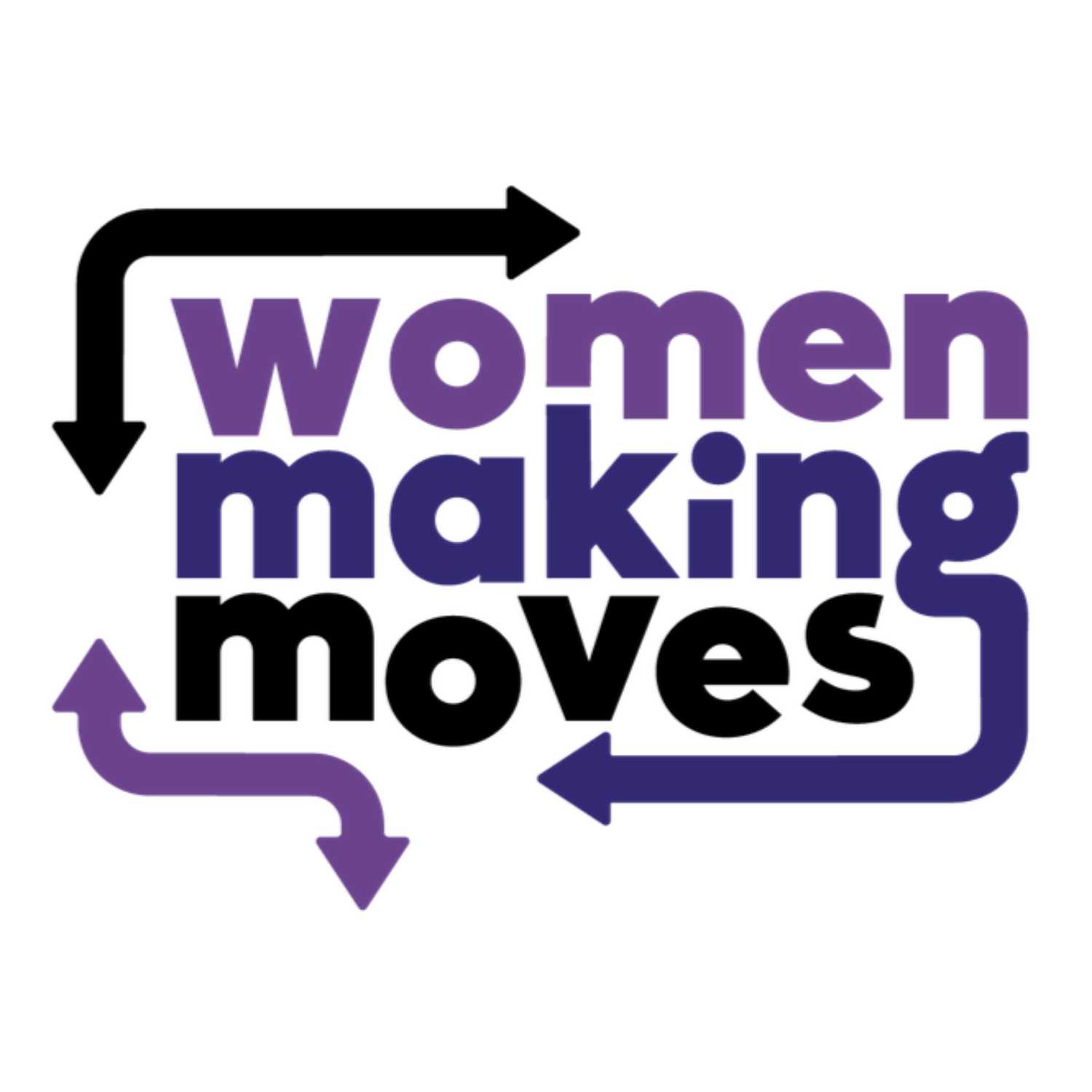
Women Making Moves
Amy Pons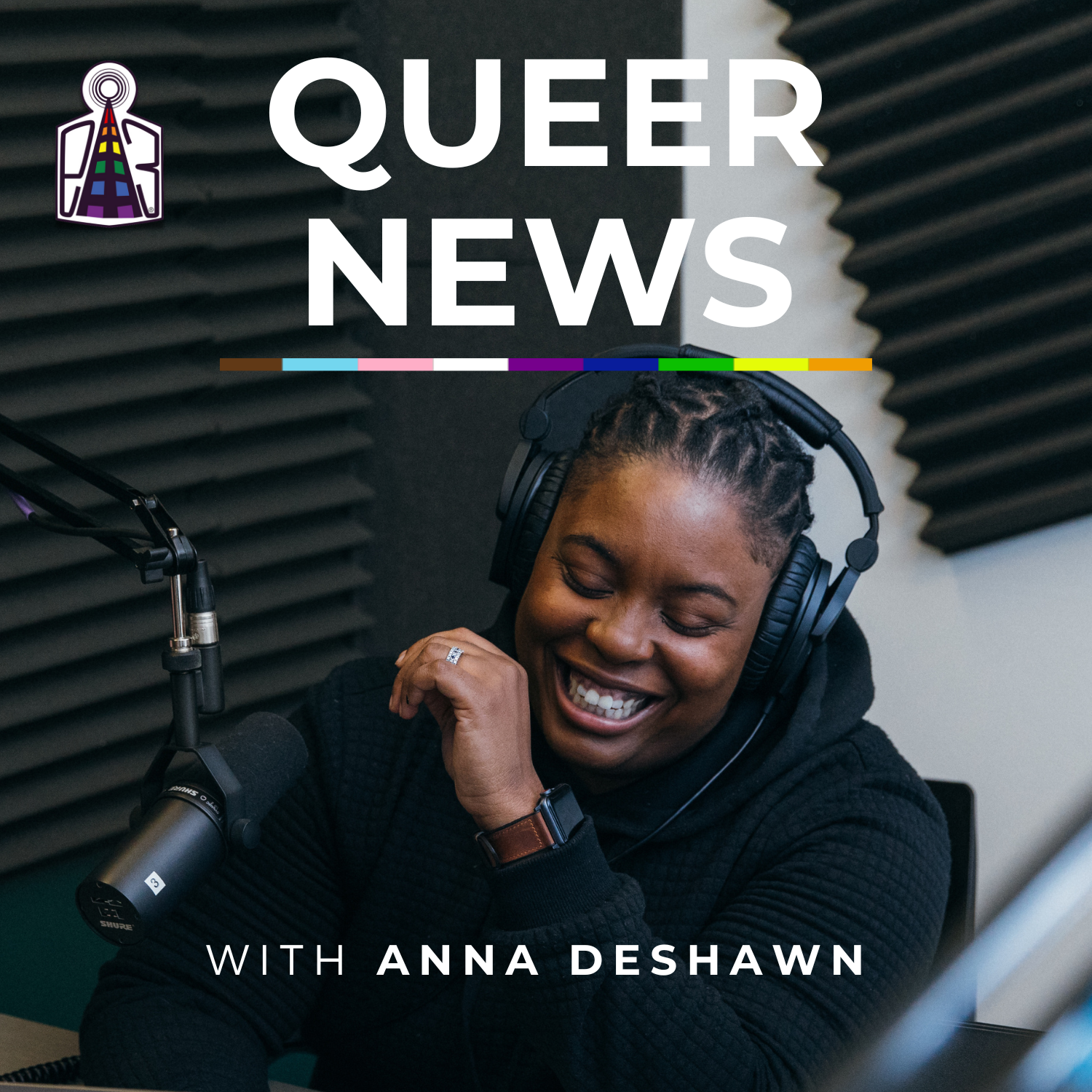
Queer News
E3 Radio
Nonprofit Mission: Impact
Carol Hamilton
Small But Mighty Agency: How to Grow Your Agency
Audrey Joy Kwan | Growth Strategist for Agencies
Disrupt Your Money
Meg K. Wheeler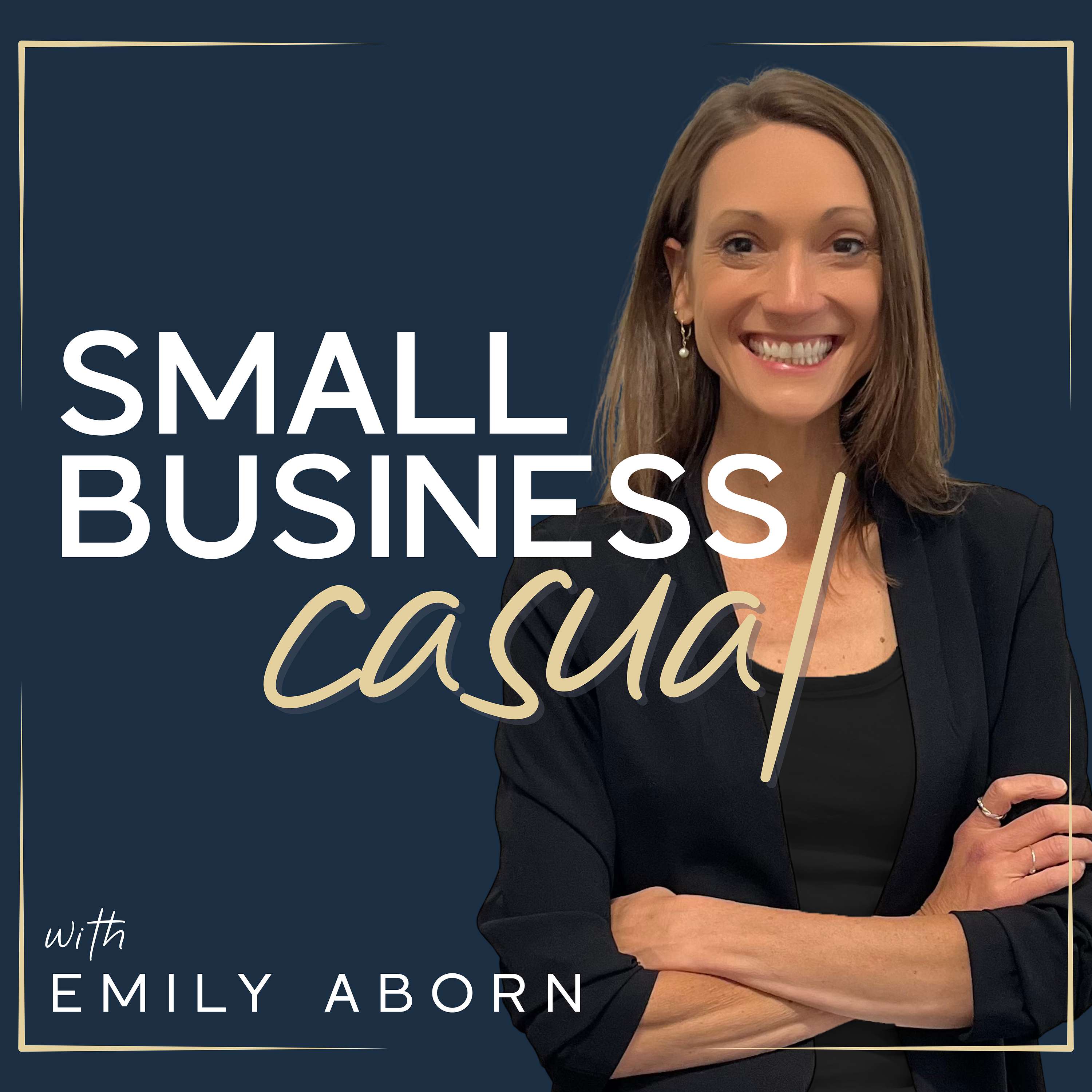
Small Business Casual
Emily Aborn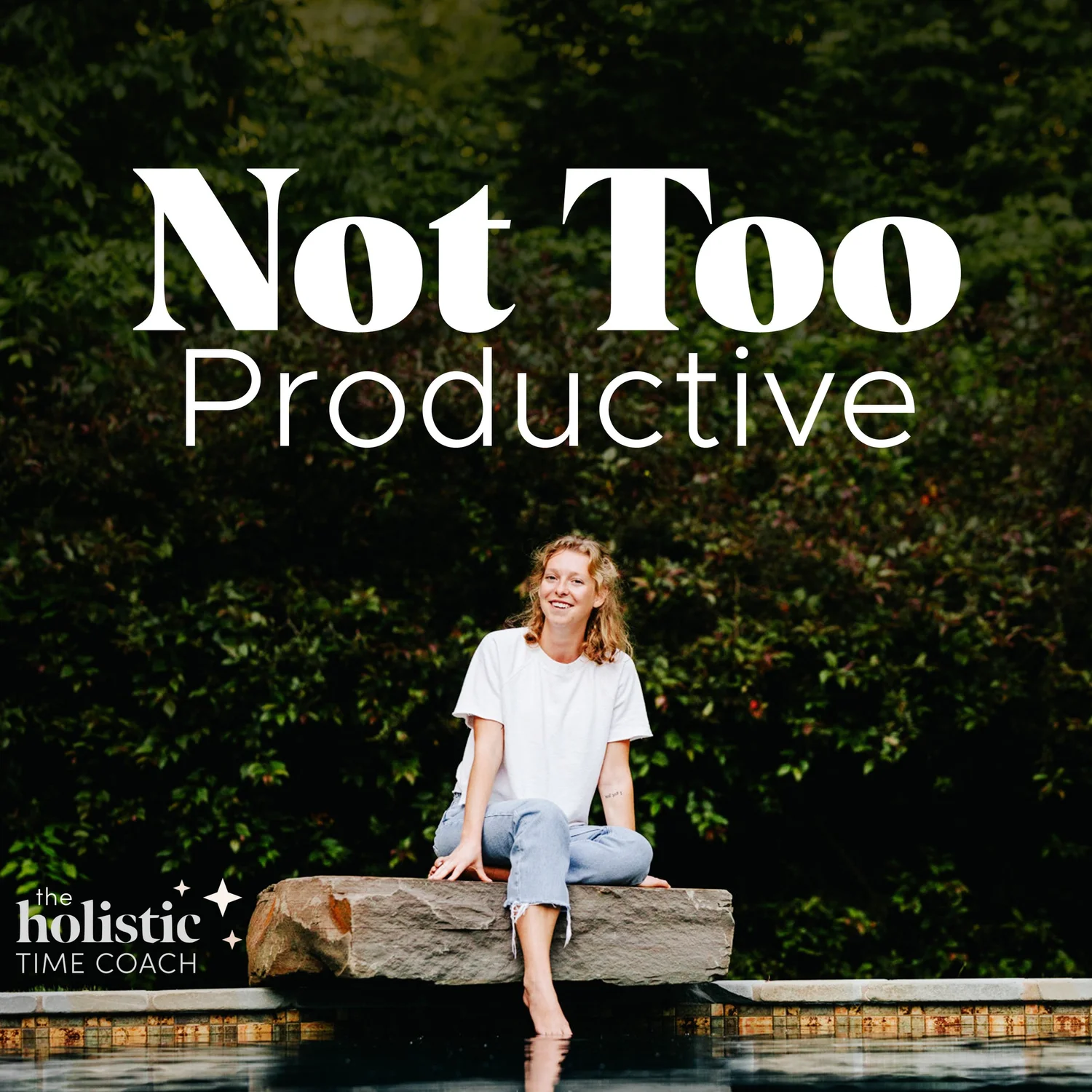
Not Too Productive
Becca Rich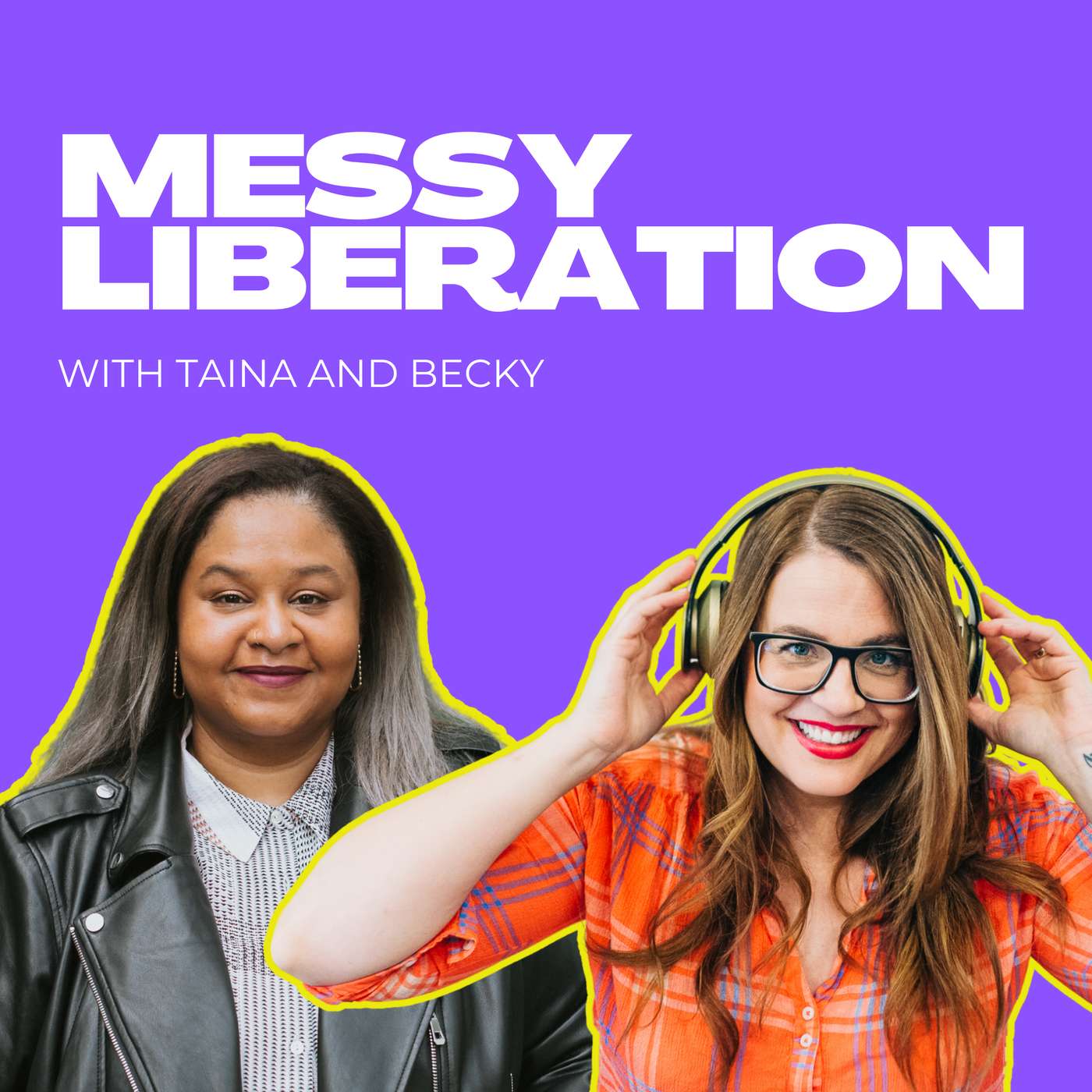
Messy Liberation: Feminist Conversations about Politics and Pop Culture
Becky Mollenkamp and Taina Brown
Empowered & Embodied Show
Kim Romain & Louise Neil
The Air We Breathe: Finding Well-Being That Works for You
Heather Sayers Lehman, MS, NBC-HWC, NASM-CPT, CSCS, CIEC, CWP
Careers at the End of the World: Reimagining Ambition, Work, and Your Job Search in Unprecedented Times
Jenn Walker Wall | Work Wonders Careers
The Passionistas Project Podcast
Pop Culture Passionistas
Humaning: The Shit We Need to Talk About
Steff Gallante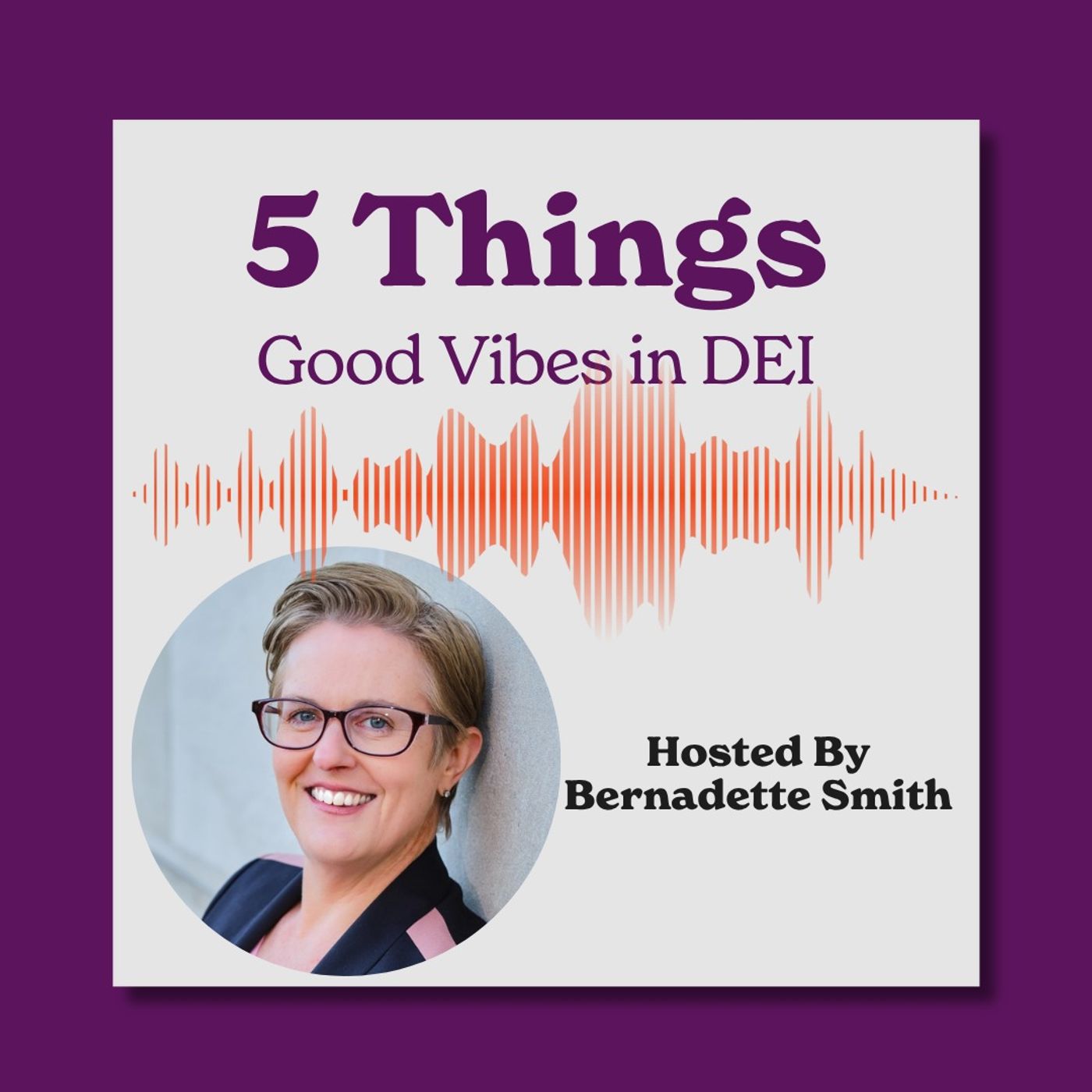
5 Things: Good Vibes in DEI
Bernadette Smith
The Art Of Imperfect Adulting
Amy Stone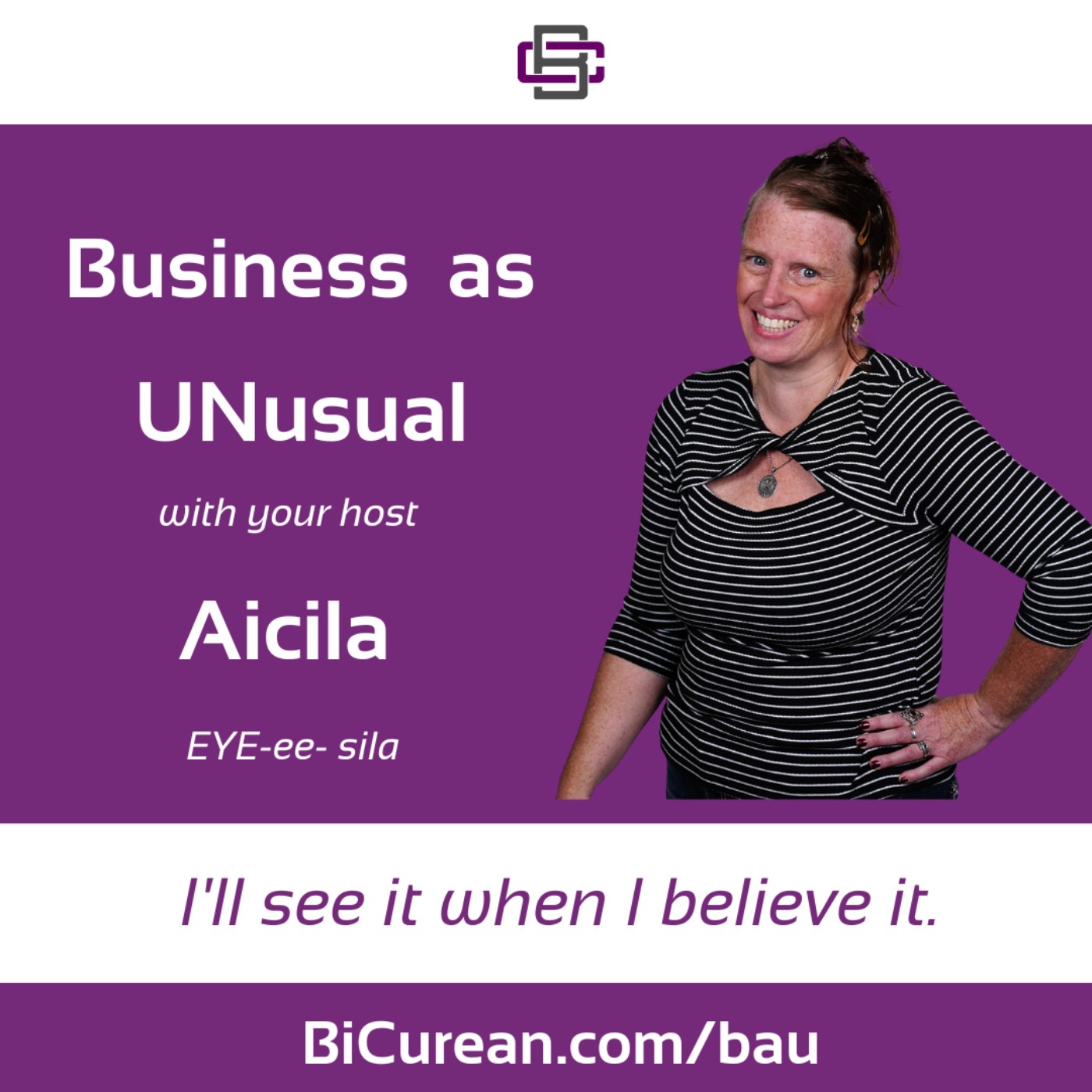
Business as UNusual
BiCurean Consulting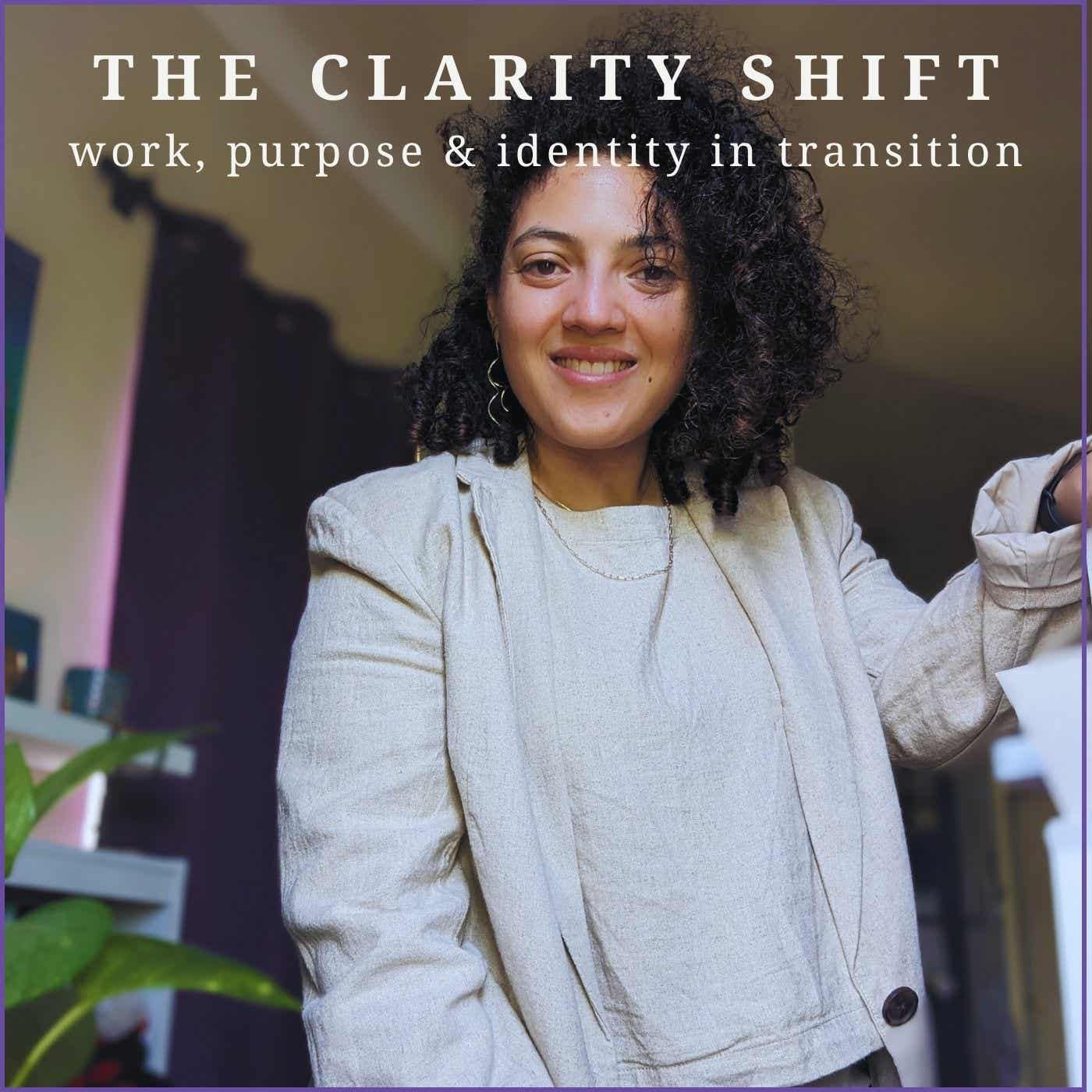
The Clarity Shift
Miriam Raquel Sands | Clarity Coach
Cozy Conversations with The Sister Project
Lauren Massarella and Michelle Anderson
Departure Menopause: Neurodivergent-Affirming & Weight-Inclusive Care
Melinda Staehling
The Empress and The Fool
Sarah Dittmore & Kaitlyn Gulock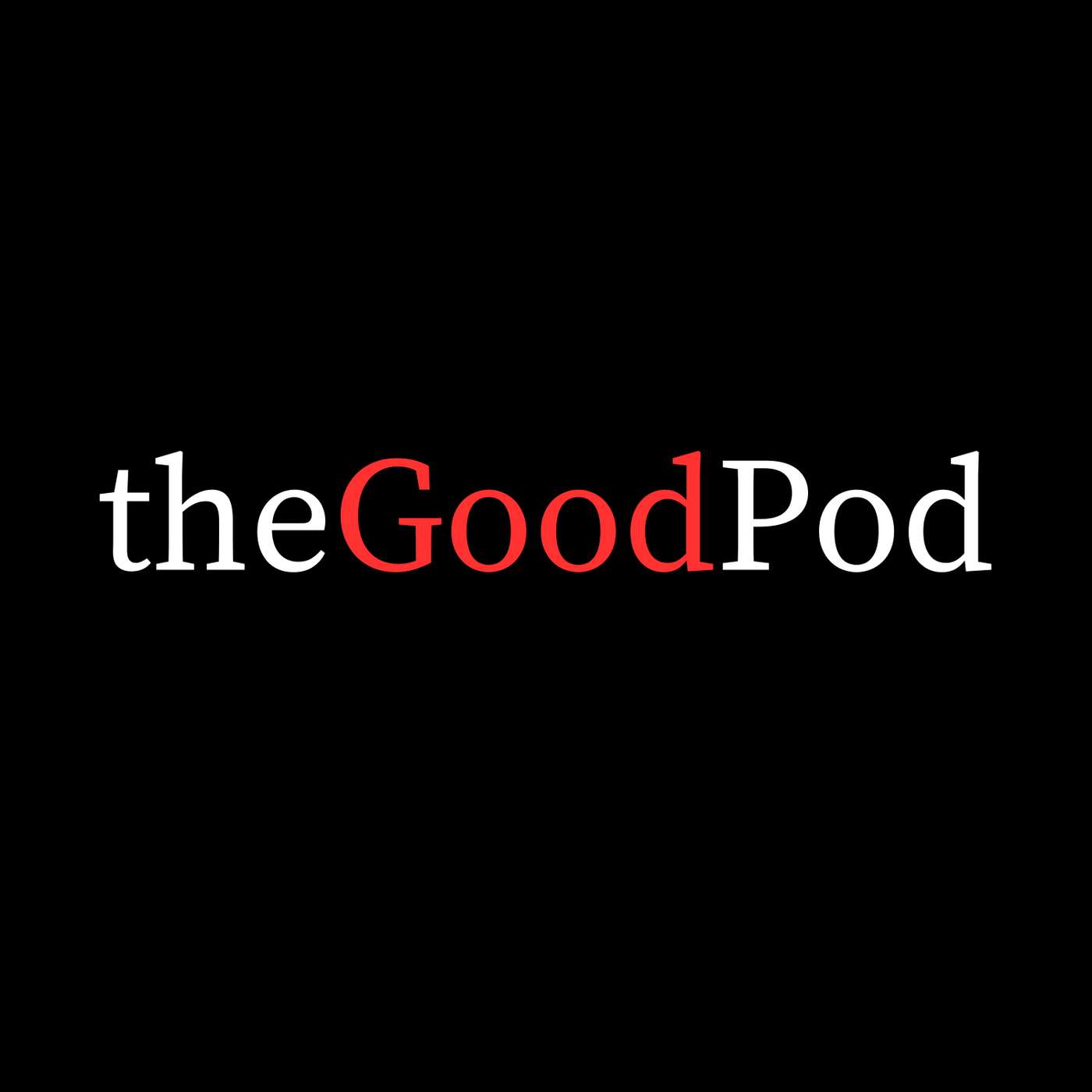
The Good Pod
Jason Reed and Marissa Garza
Gratitude Geek
Kandas Rodarte | Gen X Growth Coach for Women Solopreneurs
Mental Health Warrior & Neurodivergent Advocate
Amy D. Taylor | Mental Health Warrior & Neurodivergent Advocate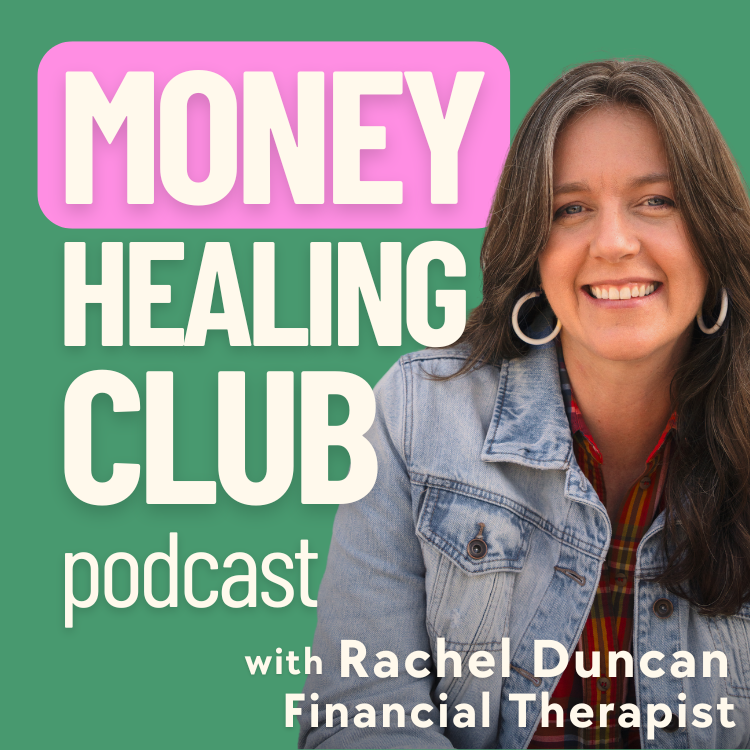
Money Healing Club Podcast
Rachel Duncan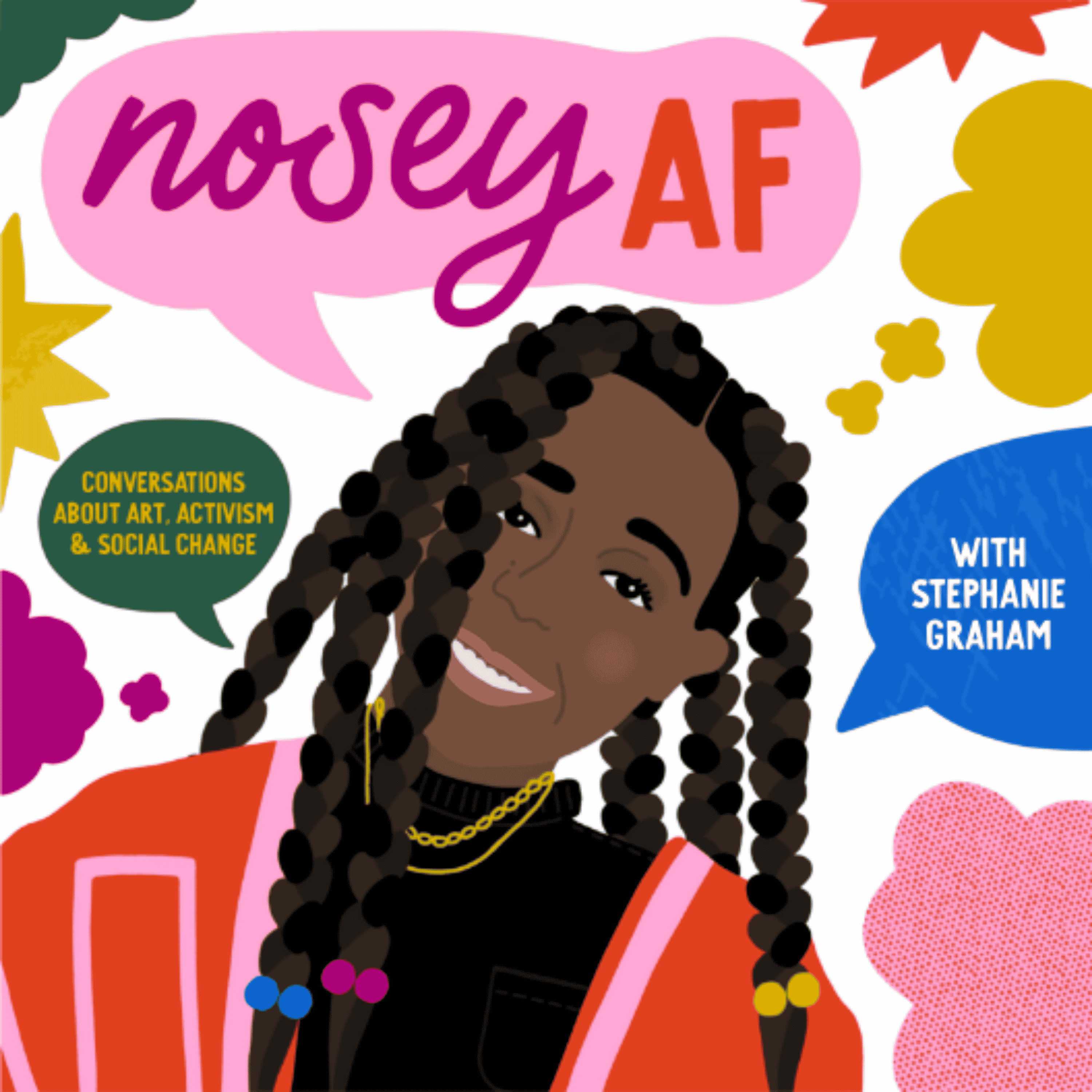
noseyAF: Conversations about Art, Activism, and Social Change
Stephanie Graham
The RestLab with Jordan Maney
Jordan A. Maney
Was It Chance?
Alan Seales, Heather Vickery & Broadway Podcast Network
White Homework
Tori Williams Douglass, Benjamin Faye
Playing Big with Lindsay Johnson
Lindsay Johnson, The Radical Connector



